Underwear, Public Fitness, and the (Dubious) Progress of #aerieREAL
I’m going to take it as an assumption that in any thorough discussion of fitness, we’re also inevitably going to talk about body image. Lately, when I’m thinking about fitness and body image, I am unsurprisingly (and, perhaps unoriginally) drawn to underwear. I am not the first to write about a connection between underwear advertisement and fitness complexes. There’s even a meme that highlights the absurdity of underwear advertising:
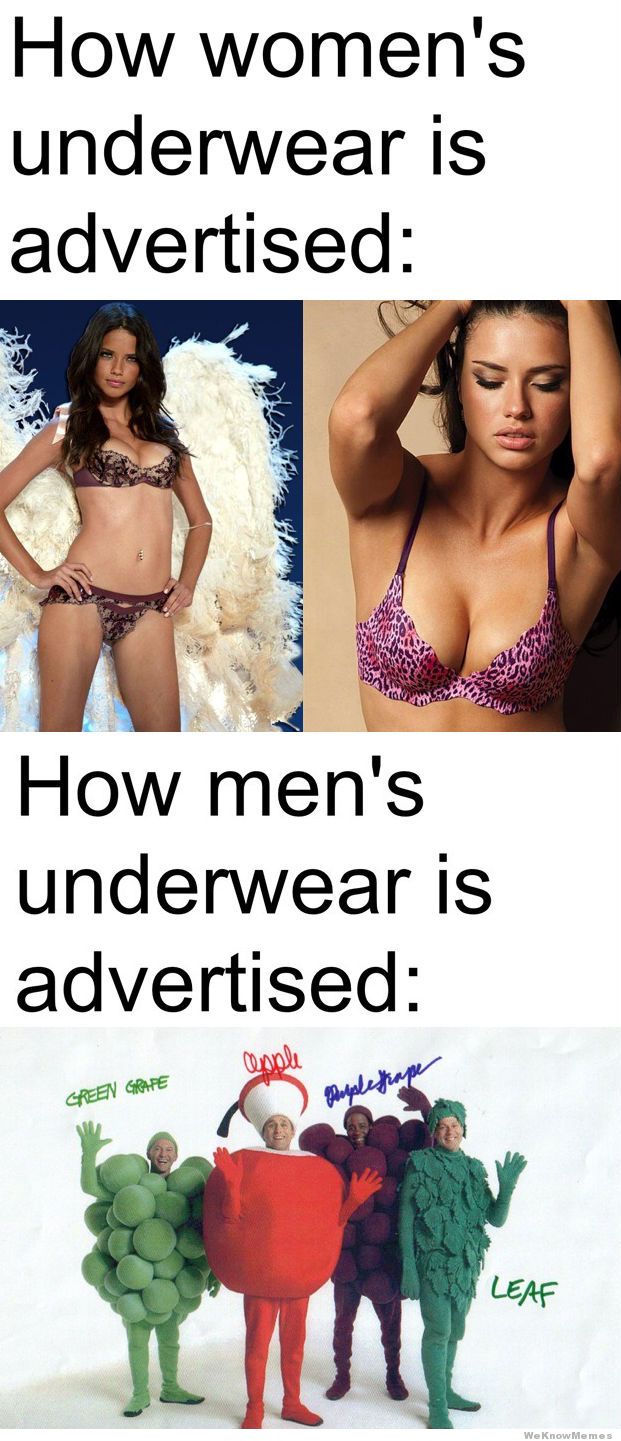
Image Credit: WeKnowMemes
Here, the meme functions as something of a visual critic. Recognizing the gendered disparity in dressing women up as overwrought, overmakeupped angels and men as large grapes allows us to laugh at the ridiculousness of both. Of course, I feel we have to acknowledge the class disparity here, too: there isn’t just a distinction between women’s underwear advertisements and men’s, but between undergarments marketed as luxury items and those sold as a necessary purchase. A men’s Calvin Klein ad, for example, is also a long way from the Fruit of the Loom dudes:
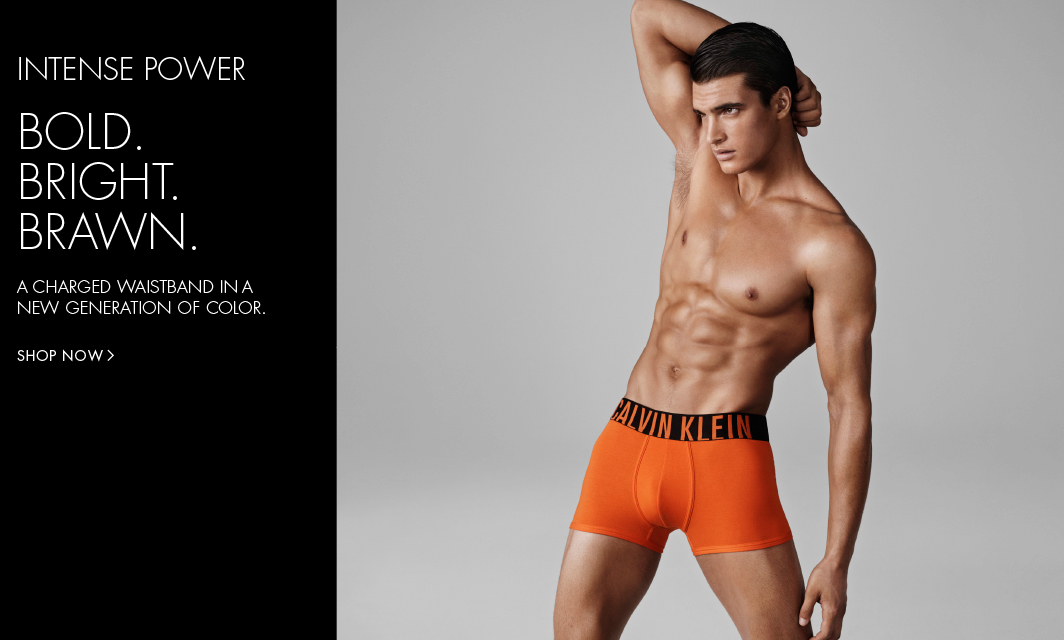
Image Credit: Calvin Klein
This gentleman is still a long way from being trussed up in an angel costume, but there’s certainly more of an association of the CK brand with physical fitness and with luxury—fancy lighting, airbrushed abs, unexplained pose… And, despite the overwhelming majority of body image issues filtered through women’s media, it might be silly to assume that men go unscathed. The Photoshop work done on the Justin Beiber's body suggests as much.
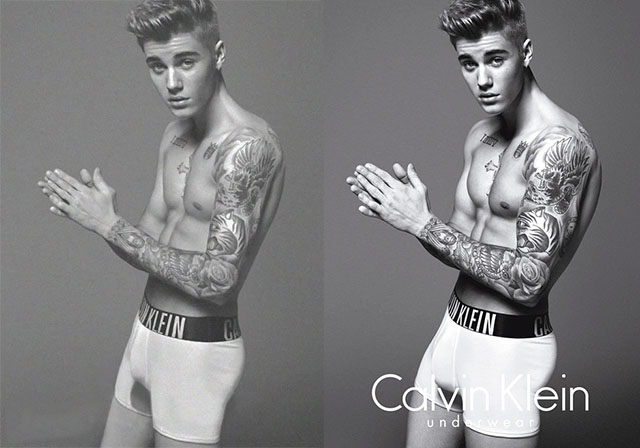
Image Credit: PetaPixel
To be clear, I don’t want to go anywhere near an argument that men’s body images are equally as damaged by underwear advertising as women's are. The Biebs claims that this “before” image isn’t real, negating any argument we might make about the photoshop industry’s effect on his phallus. I don’t care so much whether or not the image is genuine so much as to what degree we invest in the authenticity of underwear images as markers of fitness. Underwear has become somehow integral to body image, despite the fact that it’s hidden. Strangely, there’s this rhetorical move we’re being asked to make in looking at these images, where we imagine the private (underwear) dictating the public perception of our bodies. This is not to suggest that ads for, say, blue jeans, don’t also contribute to body image. Still, it strikes me as strange that photos of other people in their underwear have come to dominate how I see myself in my clothes. Further, they have collapsed the line between lingerie and fitness, as Victoria’s Secret’s obsessive attempts to get me to buy a sports bra attest.
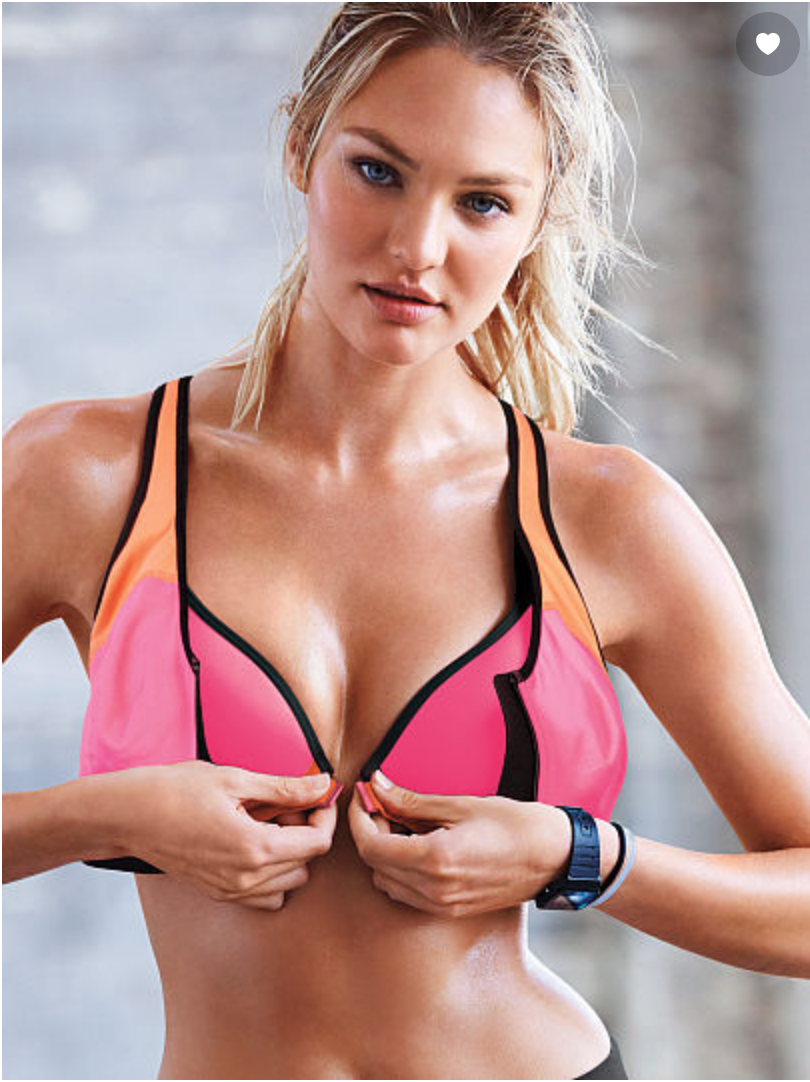
Image Credit: Victoria's Secret
Thinking about Victoria’s Secret lately has led me to consider American Eagle’s campaign @aeriereal. The lingerie and loungewear division of the company, Aerie has recently made a commitment to never photoshop their models.
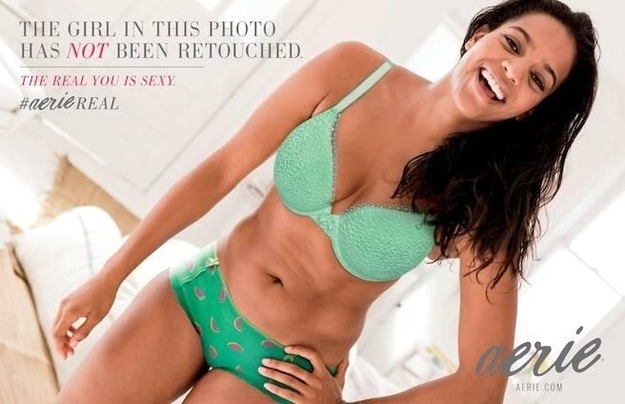
Image Credit: Buzzfeed
I like that this girl's belly looks like a belly. A healthy one, with clear abdominal shape, and fit. But not plastic. When Aerie first announced this commitment, the company was met with praise and a few tongue-in-cheek sniffs. “They still use models.” And they do still use conventionally beautiful young women. Still, in the spirit of celebrating small successes, they have made a tiny, half, stumbling baby step toward body diversity.
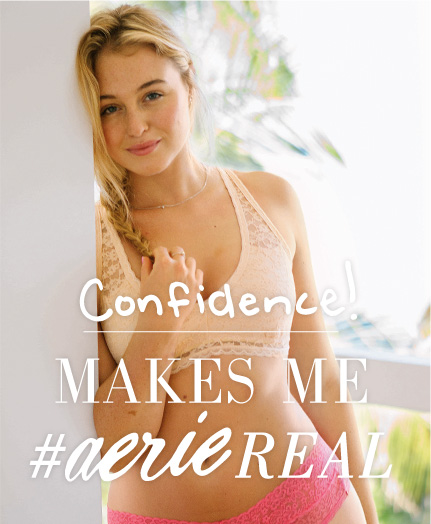
Image Credit: Aerie
In the months since Aerie began this campaign--which, I should acknowledge, is absolutely an advertising campaign and not an altruistic effort to end body negativity--the company has even shifted their rhetoric away from "sexiness" and toward the "real." The girl in this photo may or may not exercise. She appears healthy, happy. Her smile suggests an openness to the “real her.” It seems that investing in authenticity creates beauty. Leaving aside for the moment that in fact, this (beautiful, white, able-bodied) girl is meant to stand in for body diversity and leave us feminists satisfied, I’m interested in Aerie’s divergence from fitness rhetoric. In fact, instead of presenting us with a stunningly photoshopped model and lauding her as “healthy” or “fit,” Aerie goes for the rhetoric of “naturalness.” In fact, this naturalness is figured as under threat by the ad industry. For example, #aeriereal, the brand’s Twitter feed, features actual Aerie employees featuring t-shirts that read, “Love me. Don’t retouch me."
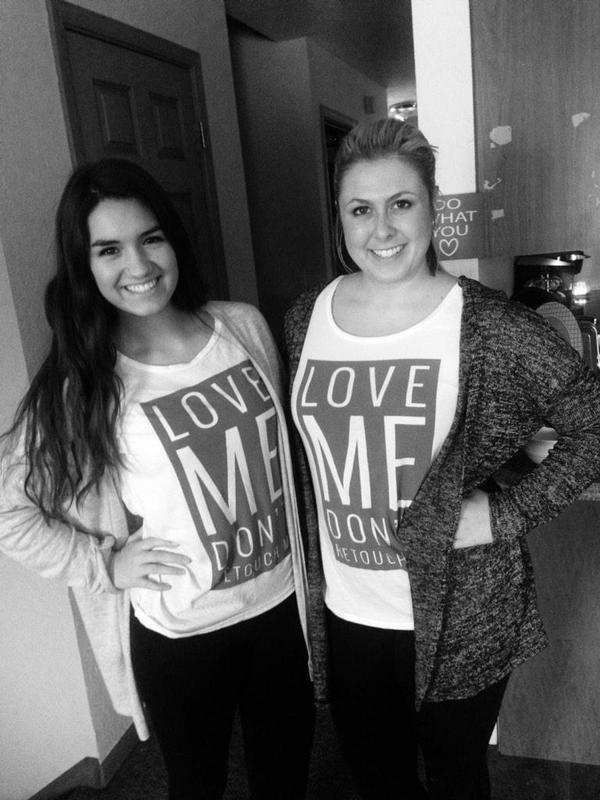
Image Credit: #aeriereal Twitter
These images, more than even the ads themselves, emphasize bodies in various states of physical fitness without completing a link between lingerie, designed for sex appeal, and exercise. Sure, this link isn’t all that hard to make; the diet industry runs on mass obsessions with looking good naked. Still, considering that almost all the people who will ever see me (including almost everyone who will ever gauge my fitness levels) will see me fully clothed, I’m finding myself more drawn to the slogan “Love me. Don’t retouch me” than to the actual images of “normal” girls. Framing retouching as an aggressor to healthy bodies and healthy body images makes this photo do some heavy lifting. A visual image itself, it critiques the ad industry’s violence on young female bodies within its own medium. That is, it turns the gaze of the viewer back onto the myriad of tools and labor that goes into the advertisements.
What does this have to do with fitness? Of course, the assumption that body image issues so latent in any female underwear advertising are tied to the fitness complex is a simplistic one. Still, I think it’s worth dwelling on how the fitness industry runs on this strange metric of private/public concern, wherein the intimacy of the naked or barely-clothed body is made public and publicized.



Add new comment